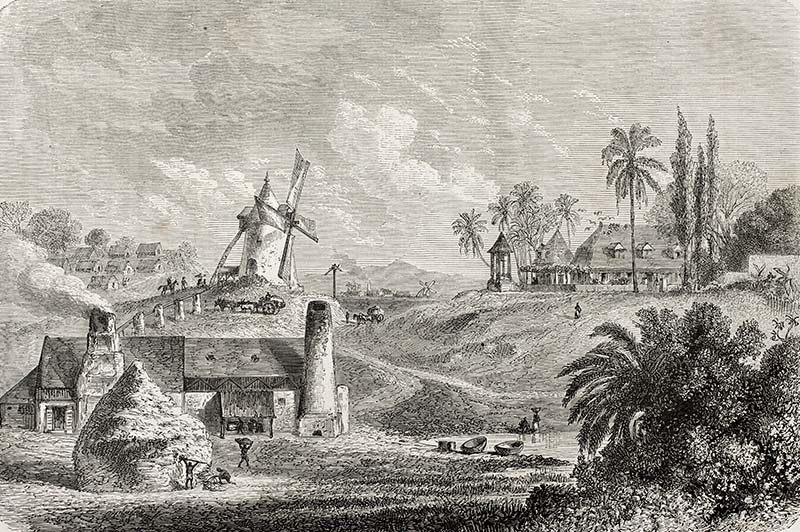
In a previous issue, we explained that rum* was originally made from molasses, a side product of making sugar from sugarcane. But at the end of the 19th century, the production of cane sugar declined, for several reasons…
Beet sugar became popular in Europe as of 1812. At the same time, there was a worldwide surplus of cane sugar, with excess production in such Portuguese colonies as Brazil. These two factors, when added together, caused a sharp fall in prices for cane sugar. Finally, the abolition of slavery in the French colonies in 1848 put an end (happily) to this better-than-cheap labor source. As the planters could no longer sell their sugar, they stopped its production, and as a result, that of the molasses that fed the distilleries.
So what to do with the supply of sugarcane that covered more than 50% of the agricultural land in the French West Indies. It had been observed that sugarcane juice fermented by the heat and natural yeast produced an alcoholic beverage. As early as 1694, Père Labat started distilling this brew to transform it into a form of brandy. Based on his experience, certain planters decided, in order to survive, to turn to the distillation of pure sugar cane juice, called “vesou” in Creole, and produce what they called “rhum z’habitant.” Agricultural rum was born!

As it happens, this rum is better and more aromatic than industrial rum made from molasses. Thus, in the French West Indies, sugarcane would be planted almost exclusively for the production of agricultural rum, with production continuing to expand exponentially. By 1939, Martinique counted 124 distilleries, with another 55 in Guadeloupe. Today less than a dozen have survived on each island, but this rum still has a few aces up its sleeve, and new distilleries have opened in the past few years.
Faced with the rise of molasses-made industrial rum around the world, agricultural rum made from pure sugarcane juice represents no more than 5% of the global production of rum. It is primarily produced in Guadeloupe and in Martinique, but also in French Guiana, Reunion Island, Haiti, Mauritius Island, and French Polynesia. That is how agricultural rum became part of France’s gustatory heritage, although its history, its origins, and its identity are first and foremost Creole.
Auteur : Victoria Payen-Pothier
MORE INFORMATION
Find Victoria Payen-Pothier’s
blog on : https://www.lacasestbarth.com

